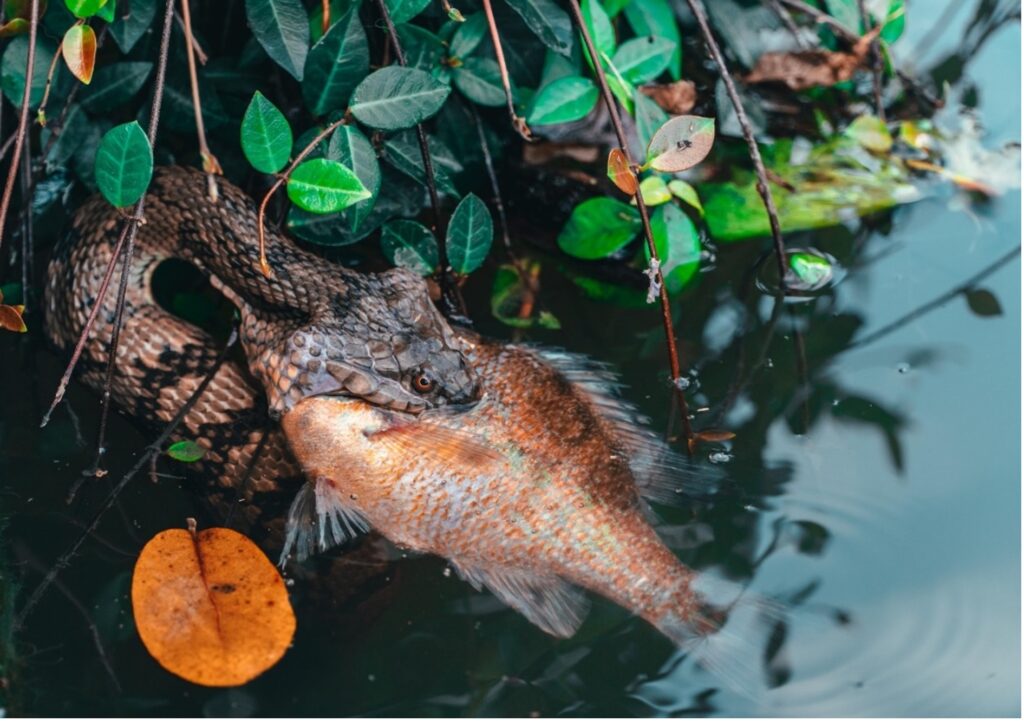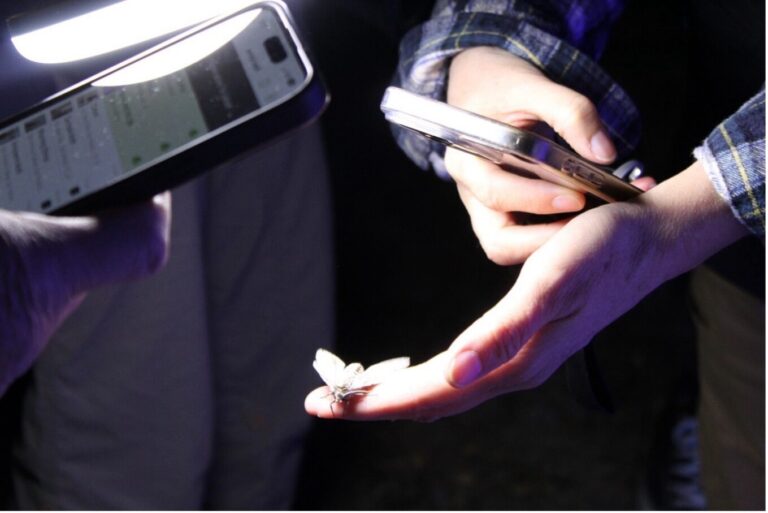Did the picture above get your heart racing? You’re not alone. Fear of snakes, also known as ophidiophobia, is one of the most common phobias in the world. Across many cultures and in popular media, snakes are often portrayed as evil or threatening, reinforcing the belief that they are creatures to be feared or avoided. Additionally, anecdotes about encounters with venomous snakes are often exaggerated, fueling an inflated sense of danger around all snakes. However, not all snakes are dangerous; in fact, of the 105 species of Texas snakes, only 15 are potentially dangerous to humans. We’re hoping to bust some myths and create more snake advocates with today’s blog about one of the San Antonio River’s most ssspectacular serpents: the Diamondback water snake (Nerodia rhombifer). Join us as we explore this amazing creature and its integral role in our local ecosystems!
Fierce Look, Shy Demeanor
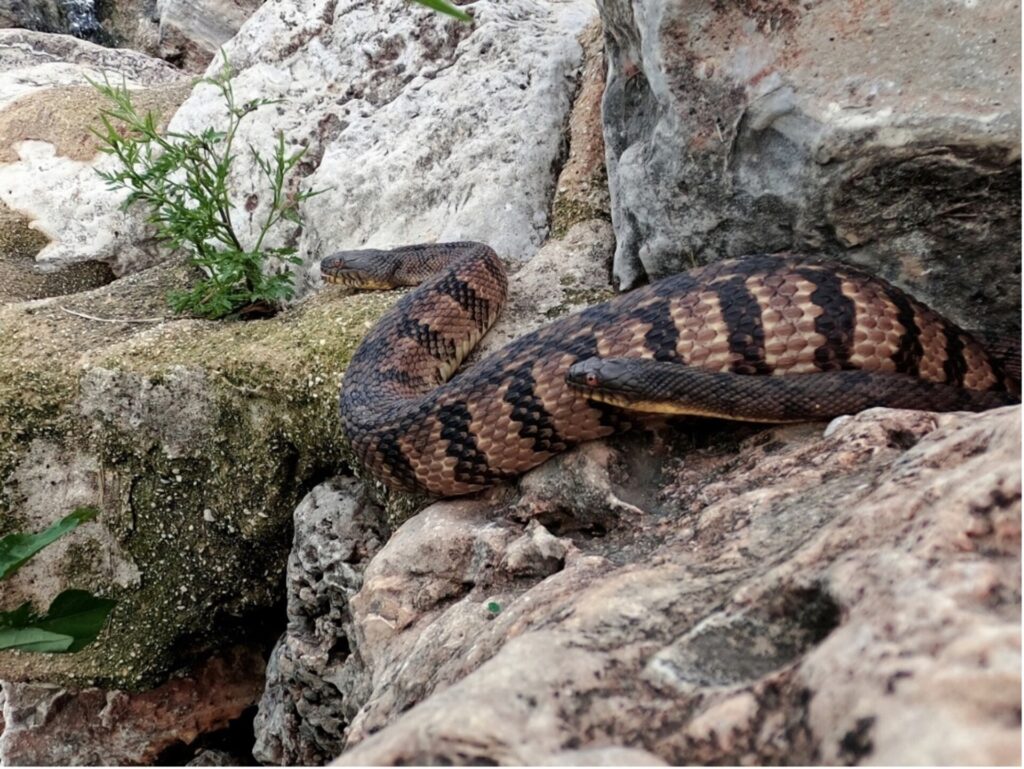
At first glance, the diamondback water snake can appear quite intimidating. Most adult snakes are rather large (about 2 ½ to 5 feet in length) and have a stout body covered in rough, ridge-covered scales—our very own river dragons! They come in colors ranging from greyish brown to dark olive green and have a black chain-like pattern running down their backs. Along the sides of the diamondback water snake’s body are a series of dark-colored bars. Despite the formidable appearance, these reptiles are keen to stay away from humans. Often found hanging from branches over water as they hunt for fish—including invasive carp and tilapia— amphibians, and crayfish, they will dive into the water and quickly swim away if approached.
Diamondback Doppelgänger
While the diamondback water snake is not an endangered species, it does face one main threat: human ignorance. This is because, while nonvenomous and often harmless, this snake is often mistaken for a more infamous and highly venomous species: the cottonmouth (Agkistrodon piscivorus). It might be easy for someone with an untrained eye to confuse these two species. Both are semi-aquatic, meaning they live in or around water, have a dark-colored band color pattern, and can display defensive behavior when threatened.
Key differences between the snakes include 1) swim patterns (cottonmouths swim with their heads above water, while diamondbacks keep theirs under), 2) pupil shape (cat-like for cottonmouths, round for diamondbacks) and, 3) head shape (V-shaped for cottonmouths, round for diamondbacks). Fortunately, cottonmouths are not nearly as common as diamondback water snakes in their range, especially in areas that are frequented by humans. TLDR: If you see a snake in or near the water, most likely it is a harmless water snake, and it is best to simply leave it alone.
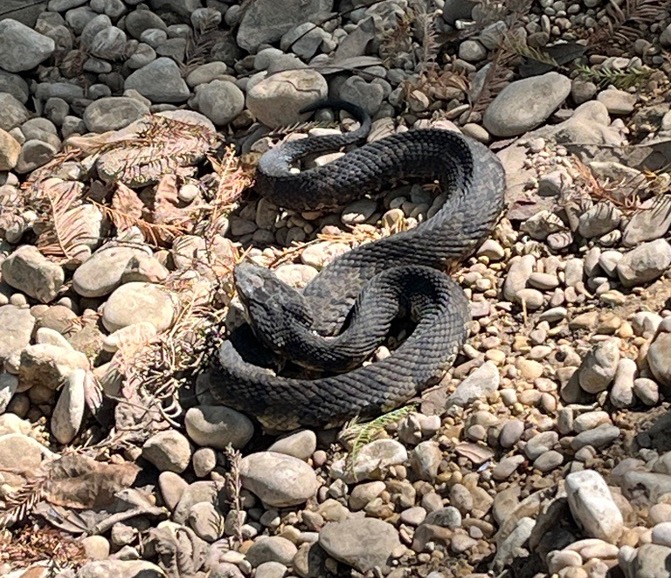
Pictured above is a Northern Cottonmouth, also known as a water moccasin. The cottonmouth gets its name from the white color inside its mouth reminiscent of cotton.
Where is the diamondback water snake found?
The diamondback water snake is one of the most common species of snake within its range (see yellow shaded areas on map below). In addition, the diamondback water snake is found in northern Mexico, in the states of Coahuila, Nuevo León, Tamaulipas, and Veracruz. They are seen predominantly near slow moving bodies of water such as streams, rivers, ponds, or swamps. Diamondbacks are typically nocturnal (active at night), but they may become more diurnal (active during the day) during the spring and fall.
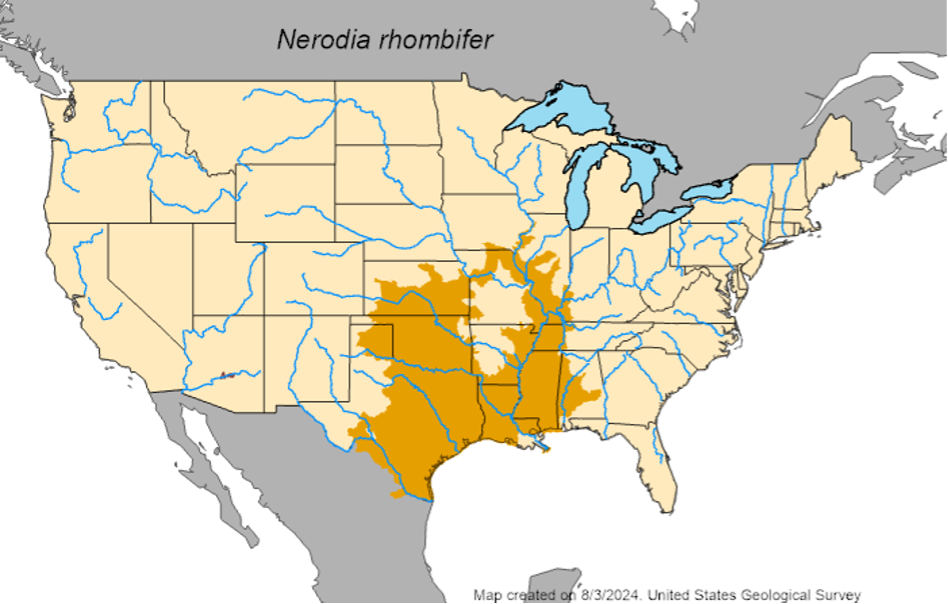
If you see a snake…
Keep your distance.
Snakes, if posing no immediate danger, should be left alone. Many people think that snakes will chase them when threatened, but snakes usually try to flee from humans. They only strike when cornered or feeling extremely threatened and will avoid direct contact with people and pets. Virtually all bites occur when the snakes are intentionally bothered.
If you’re curious, try to identify it!
With the iNaturalist app you can snap a picture of your slithering friend from a safe distance, and a global community of experts will help suggest possible identifications. It’s a great tool for learning about local flora and fauna while contributing valuable data to science!
Call a Professional
As our population continues to grow, and people continue to move into newly developed areas, encounters with snakes are going to occur as they seek food and shelter. Contact a local wildlife control service or dial 3-1-1 if the snake is inside your home or in a place where it might pose a threat to you or your pets.
If You are Bitten
While a bite from a diamondback water snake is NONVENOMOUS, it can contain some nasty bacteria. This is why it is important to clean the wound area thoroughly with soap and water, apply a thin layer of ointment and a bandage, and monitor the bite for abnormal redness and swelling. Local Urban Wildlife Biologist Joseph Plappert says that identifying the snake that bit you is CRUCIAL in properly treating the injury. Plappert says that if you are unsure about what species bit you, it is recommended to seek immediate advice from a medical professional.
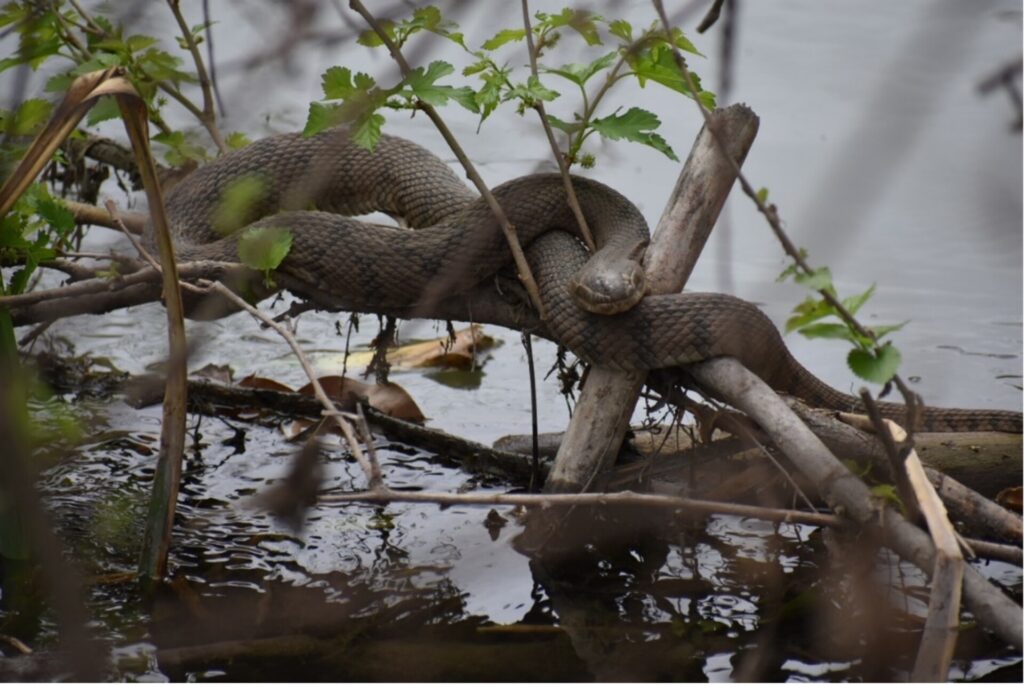
With its fierce appearance but shy demeanor, this misunderstood river dragon plays a critical role in our local ecosystems, keeping populations of fish, amphibians, and even invasive species in check. So, the next time you see one gliding through the water, snap a picture for iNaturalist, appreciate the beauty of nature, and remember—these incredible creatures are more friend than foe! Let’s give a round of applause for our scaled river guardians!

